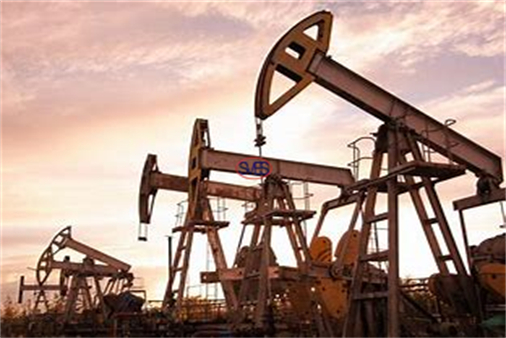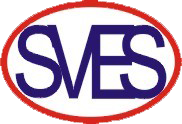
How OPEC and OPEC+ Affect the Oil Market and SVES Oilfield Supply Co., Ltd
2024-01-23 10:00How OPEC and OPEC+ Affect the Oil Market and SVES Oilfield Supply Co., Ltd
The oil market is one of the most dynamic and complex markets in the world, influenced by many factors such as supply and demand, geopolitics, technology, environment, and consumer behavior. Among these factors, one of the most influential ones is the Organization of the Petroleum Exporting Countries (OPEC) and its allies, known as OPEC+.
OPEC and OPEC+ are groups of oil-producing couRod Oil Production Systemntries that coordinate their policies to regulate the supply and price of oil in the world market. OPEC consists of 13 members, while OPEC+ includes 10 non-OPEC countries, mainly Russia. Together, they control about 40% of global oil production and more than 80% of proven oil reserves, giving them enormous potential to sway the oil market.
However, OPEC and OPEC+ also face many challenges and dilemmas in their quest to stabilize the oil market and protect their interests. In this article, we will explore how OPEC and OPEC+ affect the oil market and SVES Oilfied Supply Co., Ltd, a leading oilfield service company in the oil and gas industry.

OPEC and OPEC+ Production Quotas
One of the main tools that OPEC and OPEC+ use to influence the oil market is the production quota, which is the amount of oil that each member country is allowed to produce and export. OPEC has been setting production quotas for its members since 1982, and OPEC+ has been doing the same since 2016, when they formed an alliance to counter the impact of the US shale oil boom.
The production quota is determined by several factors, such as the global oil demand and supply, the market conditions, the production capacity, and the political and economic situation of each member country. OPEC and OPEC+ meet regularly, usually in Vienna, to discuss and agree on the production quota, and to monitor and enforce the compliance of each member.
The production quota is intended to balance the oil market and stabilize the oil price, by adjusting the supply of oil according to the demand. When the oil demand is high and the supply is low, OPEC and OPEC+ can increase their production quota to increase the supply and lower the price. When the oil demand is low and the supply is high, OPEC and OPEC+ can decrease their production quota to reduce the supply and raise the price.
However, the production quota is not always effective or efficient, as there are many challenges and difficulties in implementing and maintaining it. Some of the challenges and difficulties are:
The lack of transparency and accountability in the quota determination process and factors, which can lead to disputes and disagreements among the members.
The lack of effective monitoring and enforcement mechanisms and penalties, which can lead to non-compliance and overproduction by some members, who seek to maximize their oil revenues and market share.
The external factors and uncertainties that can affect the oil market and the oil price, such as geopolitical tensions, natural disasters, technological innovations, and consumer behavior changes, which can make the quota obsolete or irrelevant.
OPEC and OPEC+ Production Cut Dilemma
One of the most recent and prominent examples of the production quota is the production cut agreement that OPEC and OPEC+ reached in 2020, in response to the unprecedented collapse of the oil demand and price caused by the COVID-19 pandemic. OPEC and OPEC+ agreed to cut their combined production by 9.7 million barrels per day (bpd) in May and June 2020, and gradually ease the cuts to 5.8 million bpd by the end of 2022.
The production cut agreement was hailed as a historic and unprecedented move by OPEC and OPEC+, as it represented the largest and longest production cut in history, and involved the cooperation of the world’s largest oil producers, such as Saudi Arabia and Russia. The production cut agreement was also credited with helping to balance the global oil supply and demand, and to support the recovery of the oil price and the oil industry.
However, the production cut agreement also posed a dilemma for OPEC and OPEC+, as they had to balance their short-term and long-term interests, and their individual and collective interests. Some of the dilemma aspects are:
The trade-off between the oil price and the oil revenue, as a higher oil price can increase the oil revenue per barrel, but can also reduce the oil demand and the oil revenue in total, and vice versa.
The trade-off between the market share and the market stability, as a lower production can increase the market stability and the oil price, but can also reduce the market share and the competitiveness, and vice versa.
The trade-off between the current and the future, as a lower production can support the current oil price and the oil industry, but can also encourage the development and the growth of the alternative and renewable energy sources, and vice versa.

As a leading oilfield service company in the oil and gas industry, SVES Oilfield Supply Co., Ltd is directly and indirectly affected by OPEC and OPEC+, and their production quotas and cuts. SVES Oilfield Supply Co., Ltd provides high-quality products and services for various artificial lift methods, such as the rod oil production system, which is widely used to lift formation fluids from low-debit wells.
The rod oil production system consists of four main components: a prime mover, a surface pump, a sucker rod string, and a downhole pump. The prime mover, usually an internal combustion engine or an electric motor, provides power to the surface pump, which converts the rotational motion into a reciprocating vertical motion. The surface pump is connected to the downhole pump by the sucker rod string, which is lifted and lowered within the production tubing of a cased well. The downhole pump captures and lifts the formation fluids up the tubing and through a pumping tee that directs the fluid into a flowline.
SVES Oilfield Supply Co., Ltd offers various types and sizes of rod oil production systems to meet different well conditions and customer requirements. The company also provides technical support, installation, maintenance, and optimization services for its products. SVES Oilfield Supply Co., Ltd has a strong reputation for its quality, reliability, and efficiency in the oil and gas industry.
However, the rod oil production system is not only affected by the well parameters and the system design, but also by the global oil market and the price fluctuations. One of the major factors that influence the oil price is OPEC and OPEC+, which regulate the supply of oil to set the price on the world market.
OPEC and OPEC+ affect SVES Oilfield Supply Co., Ltd in several ways, such as:
They affect the demand and the supply of the rod oil production system and the oilfield service industry, as a higher oil price can increase the profitability and the sustainability of the oil production, and vice versa.
They affect the investment and the innovation of the rod oil production system and the oilfield service industry, as a higher oil price can encourage the development and the improvement of the artificial lift methods, and vice versa.
They affect the competition and the cooperation of the rod oil production system and the oilfield service industry, as a higher oil price can attract more players and customers to the market, and vice versa.
SVES Oilfield Supply Co., Ltd is committed to providing the best rod oil production system and service for its customers, and to adapting to the changing oil market environment and the actions of OPEC and OPEC+. The company strives to achieve excellence in the oil and gas industry, and to contribute to the global energy security and development.
